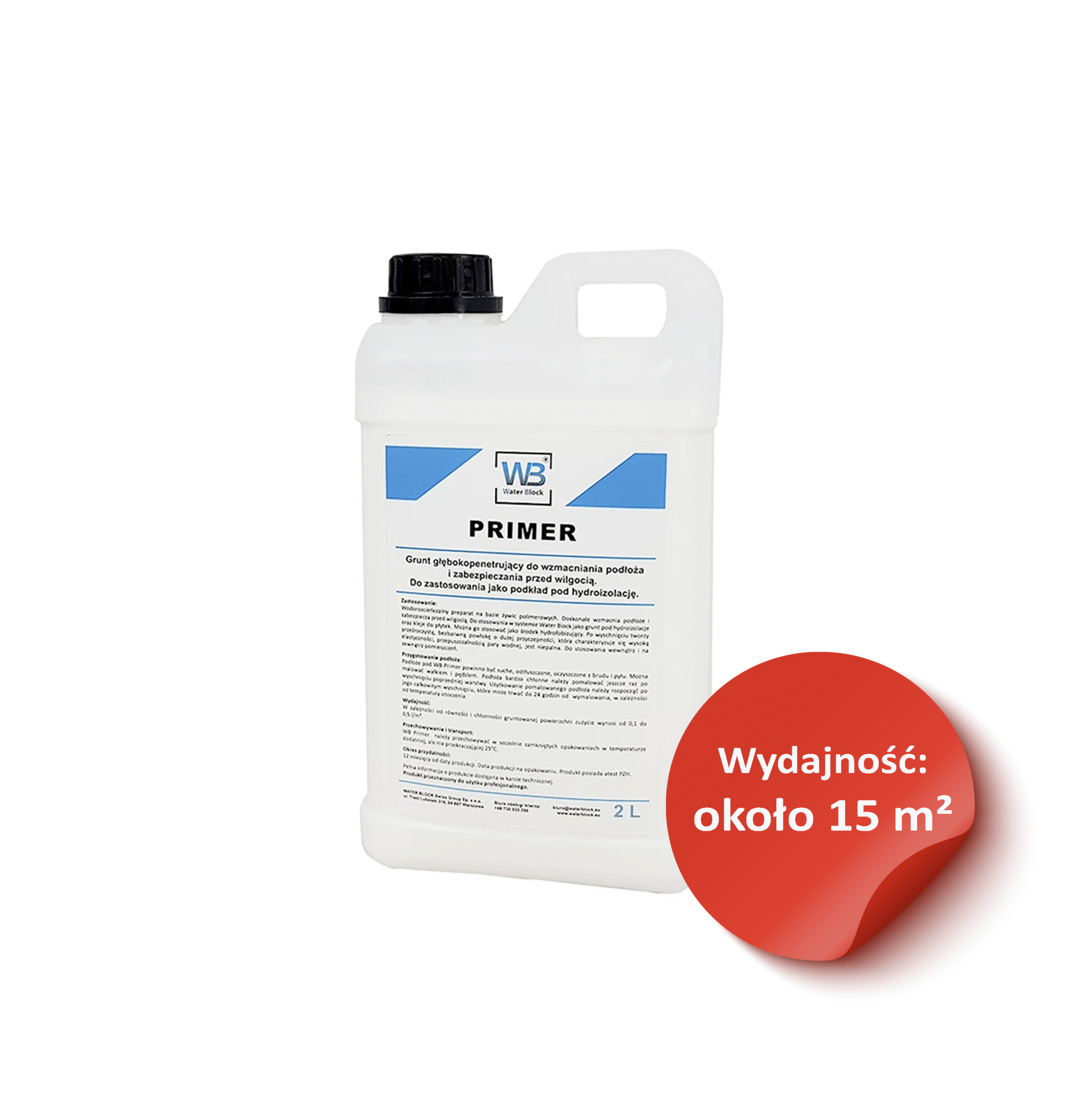-
 WB 2K Waterproofing366,54 zł
WB 2K Waterproofing366,54 zł -
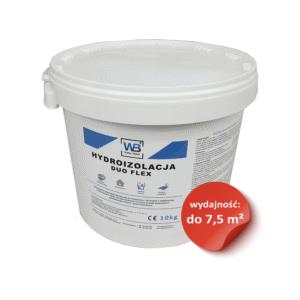 WB Duo Flex 10KG270,60 zł
WB Duo Flex 10KG270,60 zł -
 WB Membrane41,82 zł
WB Membrane41,82 zł -
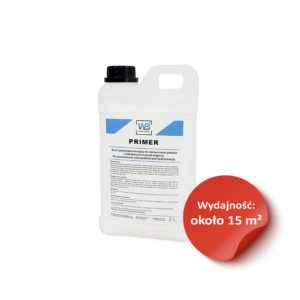 WB Primer Primer 2L55,35 zł
WB Primer Primer 2L55,35 zł -
 WB TAPE PRO18,82 zł
WB TAPE PRO18,82 zł
The terrace is a structural element that differs from the balcony in that it is situated above a room (garage, living area). Terrace waterproofing therefore plays a key role. What are the causes of leakage problems on terraces? An atmospheric phenomenon that affects the durability of the terrace is the temperature amplitude. This can be up to 50°C (+25°C indoors and -25°C outdoors).....
The terrace is a structural element that differs from the balcony in that it is located above the
room (garage, living quarters). Therefore terrace waterproofing plays a key role.
What are the causes of leakage problems on the terrace?
An atmospheric phenomenon that affects their durability is the temperature amplitude of the terrace. This can be up to 50°C (+25°C inside the building and -25°C outside). This translates into the occurrence of
high thermal stress between the individual layers of the terrace. As we know from the laws of physics, heat rises upwards and that is where it has its outlet. Therefore, whether it is Terrace insulation under tilesor any other type, in poorly executed waterproofing, warm air mass causes
stresses. This translates into scratching and cracking of the terrace floor layers. This causes failures in the form of leaks inside the building and the destruction of the terrace. Therefore, Terrace waterproofing is a guarantee of its durability.
How do you properly install waterproofing on a terrace?
We start the waterproofing of the terrace by protecting the concrete slab itself. To do this, we use a very high-quality membrane - the WB Hot Mate. It is a roofing felt, but in its parameters it is nothing like a classic roofing felt. It is over 5 mm thick and remains flexible in low temperatures down to -36 °C.
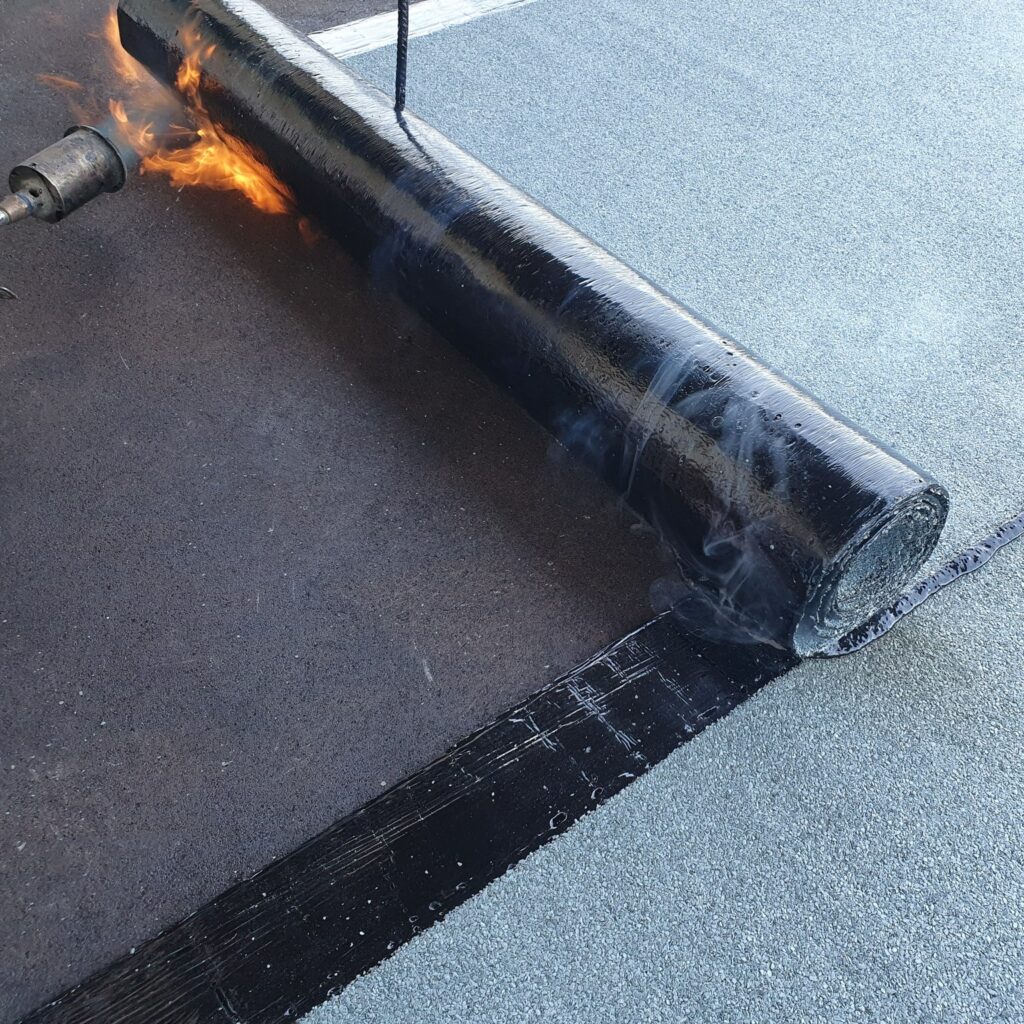
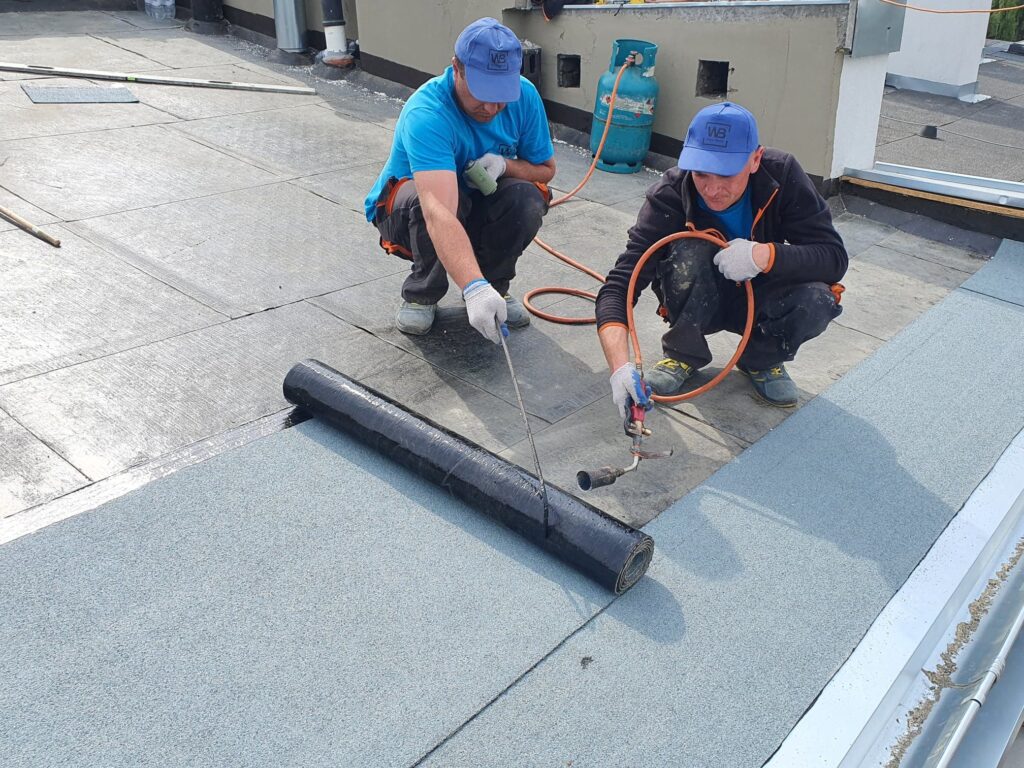
A single layer of roofing felt is laid on top of the slab. This is the first waterproofing layer that protects the interior of the
of the building from getting wet due to temperature differences. The warm air rises upwards. When it rises to the outside, condensation forms from it. In order to drain it away, a drainage mat is laid on the roofing felt. The drainage mat can easily remove the condensation, while the drainage mat can easily remove it. WB Hot Mate will prevent moisture from being transferred back to the ceiling.
Now we need to take care of the insulation of the terrace. For this, m1TP2Body in the form of XPS will be the most effective solution.
Na warstwę dociepleniową wylewamy posadzkę z spadkiem. Jeżeli zależy nam na czasie i szybkim wyschnięciu warstwy (1dzień), możemy użyć WB Fast Floor-u. Zaprawa cementowa WB Fast Floor (Klasa C-25) jest to gotowa wylewka posadzkowa o przyspieszonym czasie wiązania oraz właściwościach
waterproofing. The prepared mortar is poured onto the prepared substrate, the thickness of the layer is measured with leveled guides made of metal tubes or bars, along which the mortar is spread with a wooden or metal batten. The floor can be walked on after about 30 hours, depending on the temperature and humidity of the environment. Once the floor has been poured, the waterproofing on it can be laid after as little as 3 days.
We start the process with the insulation layer of the terrace by priming the substrate. Priming the substrate translates into better contact with the waterproofing coating, i.e. better
adhesion. Among the Water Block products, as a primer, the following performs well. WB Primer. Due to the deep penetration of m1TP2Plastic, as well as the fact that it forms a slightly tacky film when dry, m1TP2Plastic waterproofing blends perfectly with the substrate.
When securing the terrace, it is extremely important to pay attention to sensitive areas such as all corners and joints between the flashings and the concrete. We need to know that new buildings settle over a long period of time and the building structure works hard.
In the first instance, there is a lot of cracking at the joints of the structure and this can lead to cracks in the waterproofing. Old buildings are also affected, as the laws of physics and harmful weather conditions continue to act on them. When temperatures change, concrete expands and then contracts, which also leads to cracks and fissures.
The solution to such situations is to use reinforcing and sealing tape WB TAPE PRO. Tape WB TAPE PRO not only has reinforcing properties, but unlike many other tapes on the market, it is waterproof. If a crack occurs and the waterproofing fails, the tape will protect the building from water penetration. Tape should be laid on all corners and joints with drip caps. If the balcony is large and there are expansion joints, these should also be taped.
It is also important to remember that it is worth using solutions that are part of a single system. This ensures full compatibility of the individual components and eliminates the possibility of adverse chemical reactions between the products.
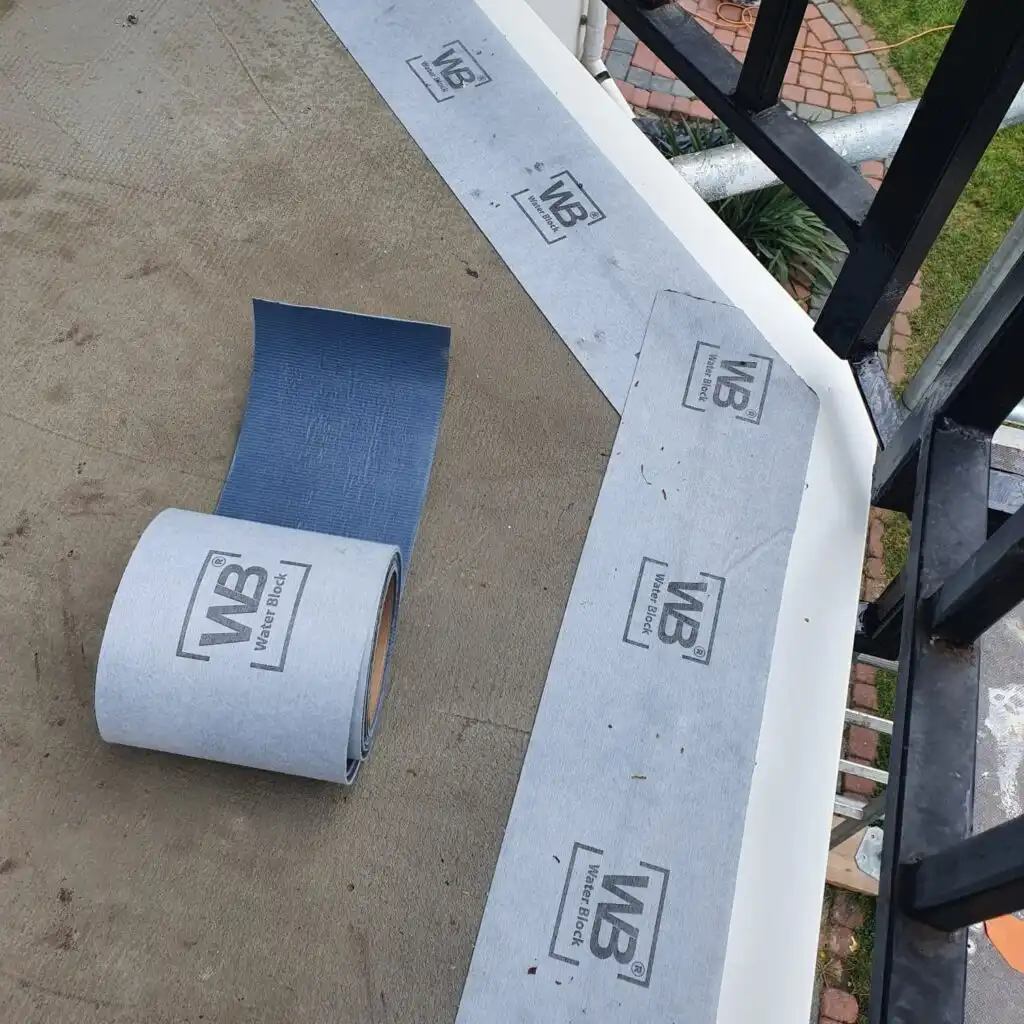
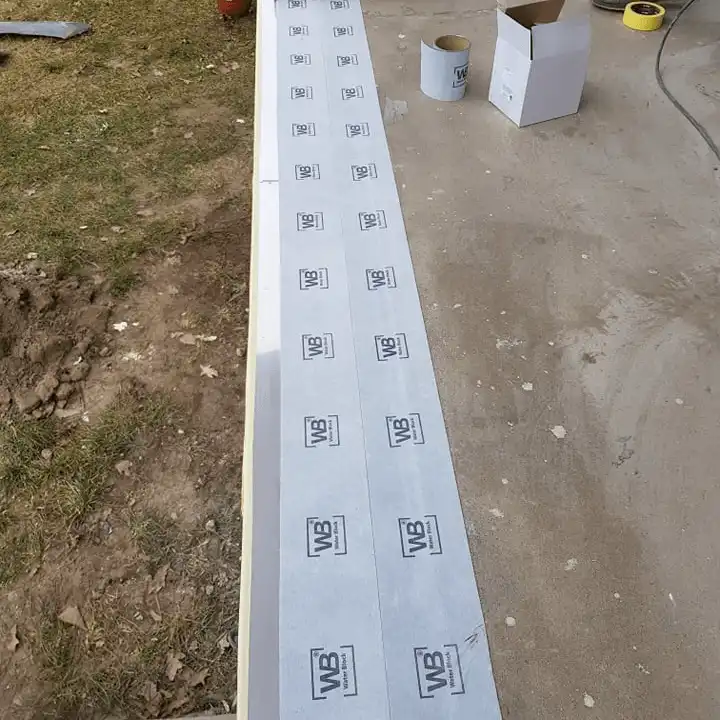
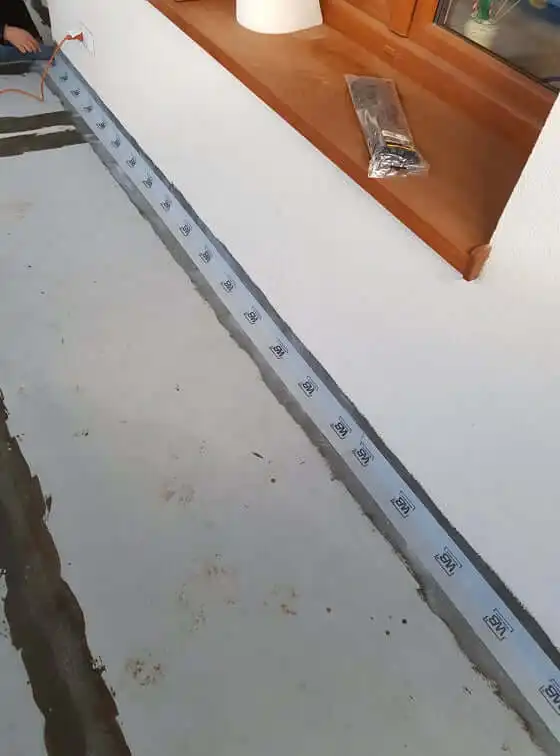
If the substrate has already been primed and the WB TAPE PRO we can proceed with the waterproofing of the terrace. For this we need two different waterproofing systems: WB DUO FLEX as an adhesive for WB MEMBRANE and at the same time a waterproofing layer and WB 2K as the final layer to be applied after the surface has been covered with the material WB MEMBRANE.
Both insulations are characterised by their ease of application and good adhesion to the substrate. They form flexible coatings that are resistant to freezing and thawing cycles. They remain flexible even at very low temperatures.
WB MEMBRANE reinforces the substrate and improves its tightness in areas of very high water pressure. It has a hydrostatic pressure loading capacity of 0.5 MPa, a temperature resistance of - 30 °C to + 90 °C and a high tensile strength of up to 13 MPa. It withstands a water column pressure of 50 metres per square cm. Application WB MEMBRANE in both terrace and balcony systems guarantees airtightness for many years, even under extreme weather conditions. Traditional finishing materials such as tiles on glue, as well as ventilated systems such as slabs on feet and decking boards can be laid on top of such a systemically executed insulation.
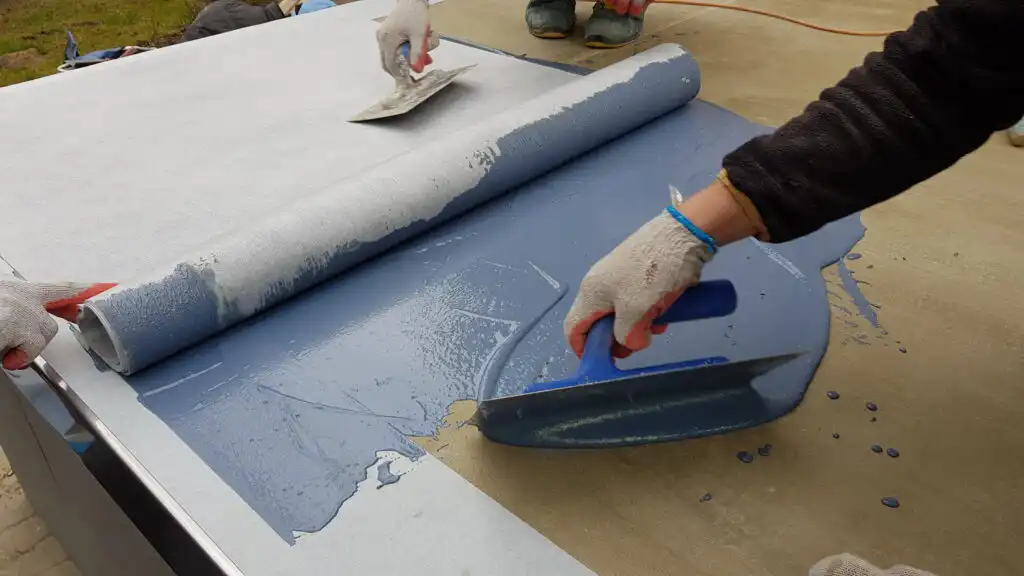
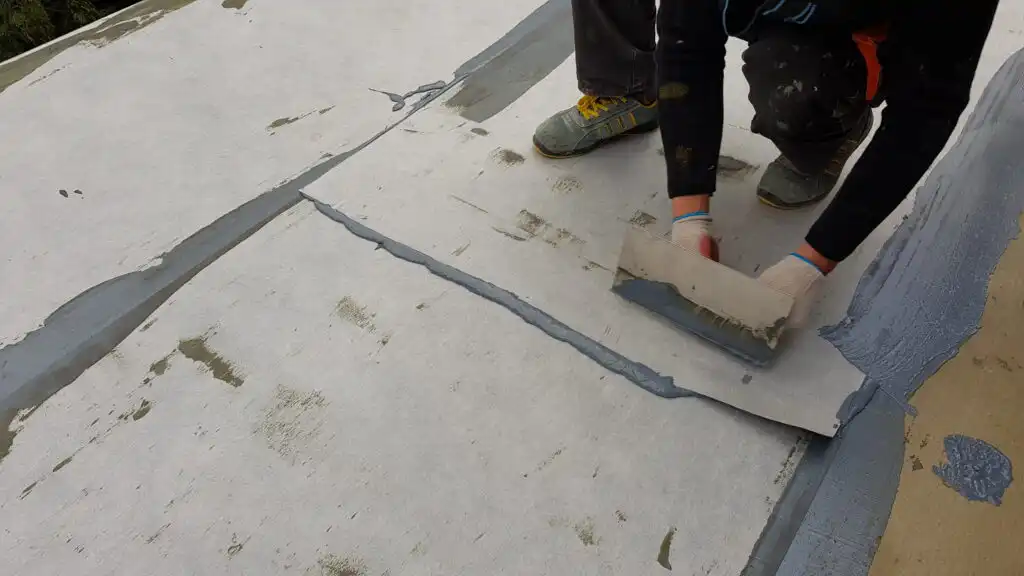
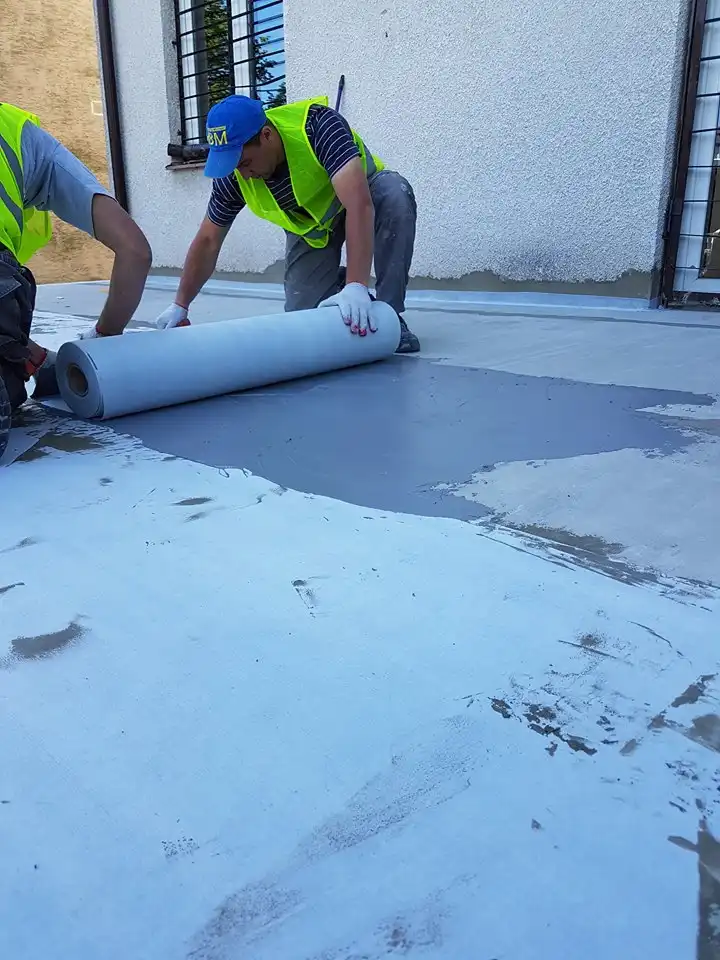
WB Membrane installation method:
Sequence of work in waterproofing a terrace over a heated room :
- Prime the substrate WB Primer
- Secure the terrace slab WB Hot Mate 5.0
- Lay geotextile drainage mat
- Use XPS insulation
- Pour the sloping layer of WB Fast Floor
- Prime the substrate WB Primer
- In the corners of the building and at any joints with the eaves, apply tape WB Tape Pro
- Apply waterproofing WB Duo Flex by embedding the waterproofing WB Membrane
- Spread the mixture all over WB Waterproofing 2K
Materials needed:
-
 WB 2K Waterproofing366,54 zł
WB 2K Waterproofing366,54 zł -
 WB Duo Flex 10KG270,60 zł
WB Duo Flex 10KG270,60 zł -
 WB Hot Mate 5.0270,60 zł
WB Hot Mate 5.0270,60 zł -
 WB Membrane41,82 zł
WB Membrane41,82 zł -
 WB Primer Primer 2L55,35 zł
WB Primer Primer 2L55,35 zł -
 WB TAPE PRO18,82 zł
WB TAPE PRO18,82 zł
-
 WB Dilatation50,43 zł
WB Dilatation50,43 zł
As a finishing touch, you can use solutions with traditional bonded tiles or choose a modern ventilated balcony system - slabs on adjustable feet or composite decking.


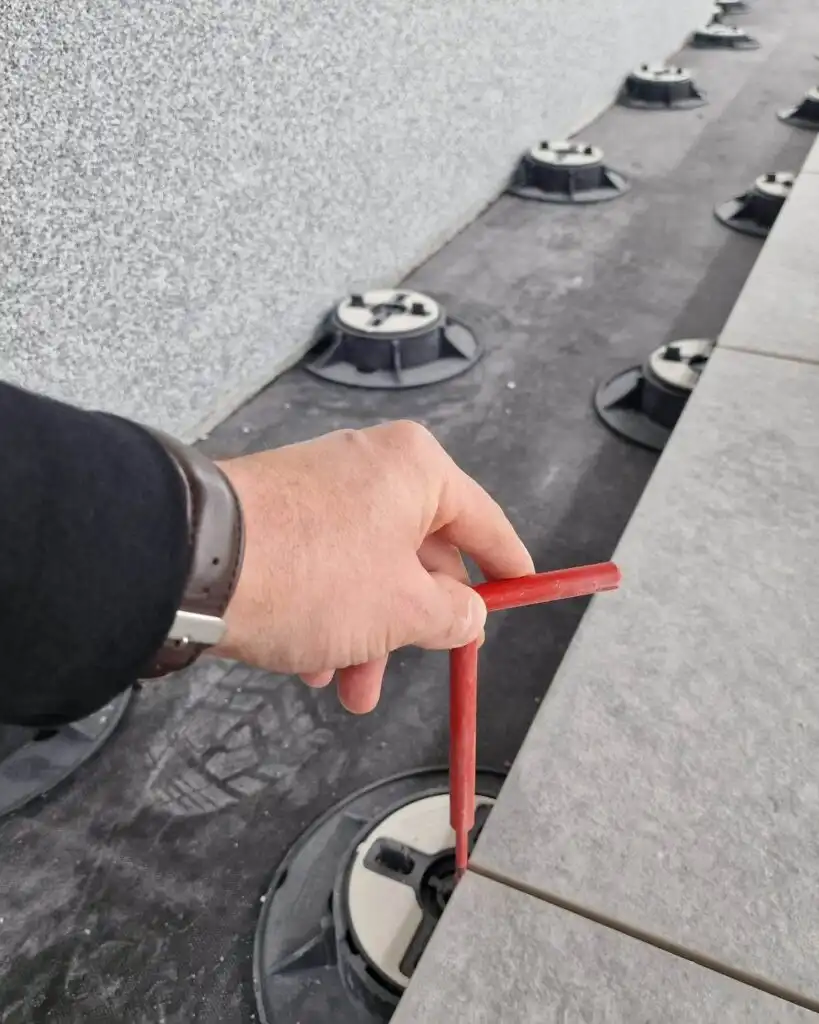
Finishing materials:
- Concrete - granite slabs
- Patio feet
- Aggregate or grass
or
- Balcony tiles - no larger than 60cmx60cm - recommended : 30cm x 30cm glued on WB FLEX GLUE with wide joint min. 6mm filled with WB Flex Grout.



REMEMBER !
If you are not sure how much material you need for your terrace insulation, you can always use our help. Write or call our technical department.
As a finishing touch, you can use ventilated solutions such as slabs on adjustable feet or composite decking.






